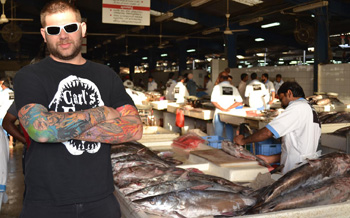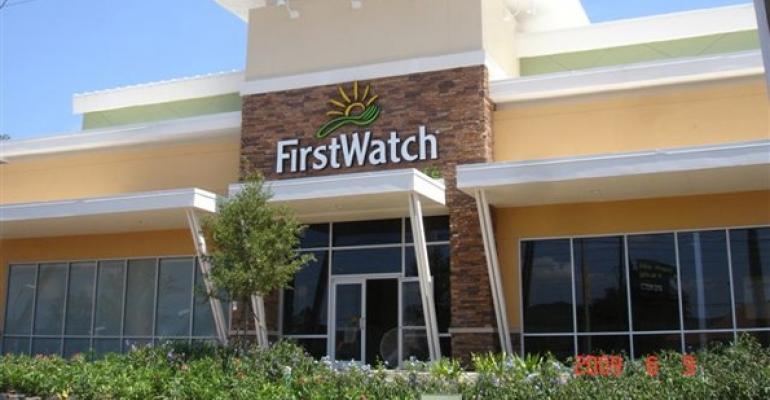
Front Burner Brands Inc. corporate chef Shane Schaibly is moving on to lead the menu at breakfast, brunch and lunch chain First Watch.
Friday is Schaibly’s last day at Front Burner, parent company of The Melting Pot, Burger 21 and GrillSmith. On Feb. 17, he will take that mantle at First Watch. Both operators are based in Tampa, Fla.
While at Front Burner, Schaibly helped create the Burger 21 concept. He also introduced local and seasonal produce to 135-unit The Melting Pot.
Developing strategies for using local and seasonal produce is also a priority for him at First Watch, he said. He recently discussed his plans with Nation’s Restaurant News.
RELATED
• First Watch acquires The Good Egg
• CMO Perspectives: First Watch’s Chris Tomasso
• More family-dining news
Why are you making the move from Front Burner to First Watch?
Many different reasons. Mostly, it’s a different time in my life. My wife is pregnant with our second child and I’m looking for something with easier hours. I’ve been at Front Burner for seven years and I want to change it up — get away from dinner and look at breakfast, lunch and brunch.
What plans do you have for First Watch?
We’ve been talking a lot about the [limited-time offer] process. We’d like to get a little bit further ahead in terms of testing and rolling out nationwide. Also, I want to implement programs for more local and seasonal support — going to local farmers and bakeries. There’s definitely a way to do that with a national chain. You just have to be able to manage it correctly. It’s great to have goods from local bakeries or say, ‘Our produce comes from XYZ down the road.’
How do you manage that at a national chain? Do you rely on local or regional managers?
Actually, it’s about talking your suppliers through the process, setting order guides, and establishing relationships with preferred vendors and making sure they understand they have someone to go to at the corporate level. We want to manage that at the front end, so if they have a problem they can talk to me rather than a regional manager, and I can oversee the quality and consistency. I want the restaurants to be kind of turn key, so they understand what they’re getting but they don’t have to manage it too hard.
That sounds like a lot of work for you.
It’s easier than you think. I’ve just implemented that kind of local, seasonal thing in Melting Pots across the country.
Did you promote that much?
We have a couple lines on our menu, but it’s more word of mouth — servers saying, ‘These cherry tomatoes are from Florida.’
By doing it that way, you can use local produce when it’s possible, without making a public commitment to it.
Exactly right. Of course in the dead of winter there’s not a lot of local, seasonal stuff available in most of the county. So we wait until produce is in season and we can use it.
First Watch has locations in the Southeast, as well as the Midwest and Chesapeake Bay area. Is there much regional variation in the restaurants’ offerings?
Yes, based on local tastes. My thought is to supplement that, mostly on the produce side. Produce will be phase one, and then the bakery side will be the next phase.
Why are you starting with produce? Wouldn’t it be easier to get more consistency with baked goods?
Produce is a lot easier than baked goods because you can set a spec rather easily, and all produce suppliers basically speak the same language. There aren’t 10 different recipes for tomatoes, whereas there could be 100 blueberry muffin recipes out there, and five from each bakery.
How do you stay on top of culinary trends?
We work with [food and restaurant consultants] The Culinary Edge out in San Francisco, but really it’s about getting out there and seeing what people are serving. Often it’s talking to other chefs and other concepts, reading industry magazines and seeing what happens in local markets. A lot of times we look at what the small independent restaurants are doing in California and what the suppliers are bringing to the table there. A lot of trends that start in California tend to spread.
Why do you think that is?
I think it’s because of the availability of so many different types of food in California. They say the United States is a melting pot, but San Francisco is really a melting pot of cultures, and in LA you have a lot of Hispanic influence. Then you combine that with the different climates in the area. They’re able to get tons of produce and a wide array of it. So I think they’re experimenting with a lot of things. Then you can talk with local growers and reproduce them. So it’s both cultural and climatic diversity.
Contact Bret Thorn at [email protected].
Follow him on Twitter: @foodwriterdiary

